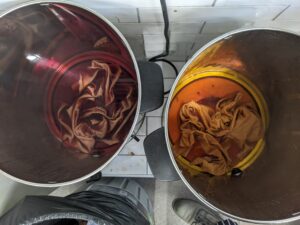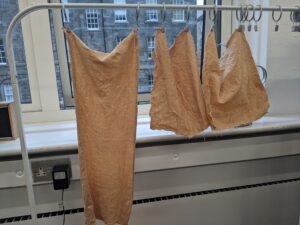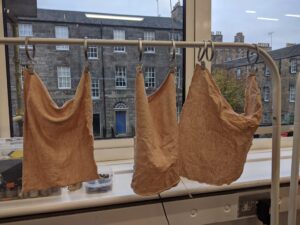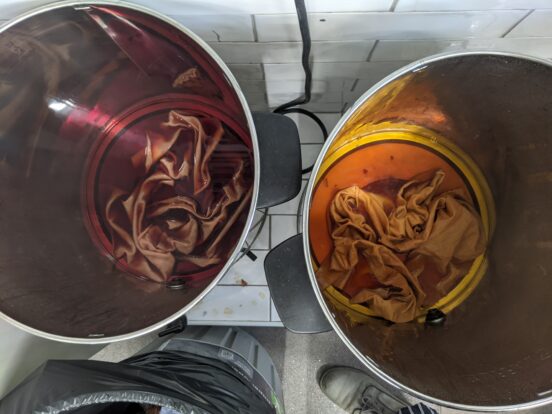To start, I separated my different coloured onion skins into white and reds and then weighed each. For every 100grams of fabric I would use 50 grams of dyestuff for the onion skins. In this instance, for my first attempt I did not have very much dyestuff, only 30 grams of the white skins, and 25 grams for the red onion skins. This was okay though! It meant I could practice with a smaller amount of fabric, in case anything went wrong. So I used 50 grams of hemp fabric (one piece of Hemp Jersey mix and another of Hemp Linen) and then a 60 gram amount of the same proportions for the larger dye bath. For these initial attempts, I chose not to complicate things by adding the mordant or modifier processes, but have since started mordanting my own fabrics at home.

I was quite hopeful seeing the colour that actually came from the skins once I had allowed them to simmer for 35 mins without any fabric. Having no colander or anything to sieve the dyestuffs from the bath, I spent a fair amount of time using tongs to remove the bits of onion. Note to self – bring a colander! Next time I’ll be more prepared.
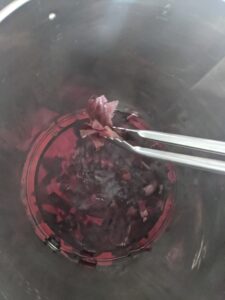
I then added my pre-wetted fabrics for an additional 35-40 minutes, regularly turning them to allow the fabric to be submerged by the dye fully. I looked into using an acidic or alkaline modifier to use after the initial first exhaust process, but actually run out of time. This would have been using a tannic acid (alkaline) or vinegar/a lemon (acidic) to alter the PH of the dye bath, therefore causing a change to the colour. I have included a picture of a dye book provided by Hannah Scott, in which she has sampled different natural fibres with different tannins and acidic modifiers.
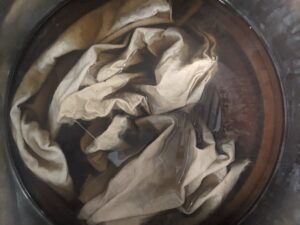
My final two pictures show the final outcomes of the dye process. Once out of the dye bath, I ran the fibre under cold water until running clear and spun to remove any excess water. Then these were ready to hang dry, whilst I cleaned the dye baths and tried to rid myself of smelling like onion! Above is the result of using white red onion skins, and below was using the white onion skins. I think next time I would like to experiment using a larger quantity of onion dyestuff, for a longer amount of time in the dye bath. I’d also like to look at how shibori or tie dye could cross over into natural dyeing.
